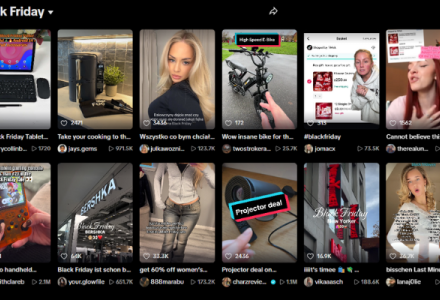E-Commerce in 2021 - From where I sit
As this momentous year drew to a close, I finally had a moment to pause, enjoy a glass of Shiraz and reflect on the year that was.
I think back to this time last year, where I asked myself, given the extraordinary growth of e-commerce this year will bubble burst in 2021?
Now, one year on, I can tell you that the bubble certainly did not burst. It got bigger.
Marketplaces increase in popularity
Globally, 2021 was another boom year for e-commerce with marketplaces (approx 62% of global e-commerce revenue) being the primary engine of growth. Whilst Amazon did not have its best year, it is still expected to finish 15% up on 2020. The e-commerce giant has seen a decline in profits but this is only due to its huge investment in warehouse capacity and transportation. In doing so, Amazon has doubled its operational capacity in two years and has 10x the fulfilment capacity of its nearest rival, Walmart. A bad year? Hardly. Just another investment in their future.
Lockdown again
The January lockdown guaranteed a fast start to the year. Suddenly, shoppers once again flocked to Amazon to buy everything from bananas to beanies. Our client's stock levels were depleted after Black Friday and the Christmas sales period. So, we rushed to increase stock holdings to cope with demand. This proved especially difficult, as we, and our clients grappled with Brexit trading conditions. Amazon offered little support, as they were still figuring it out for themselves. We worked with clients on some pretty inventive solutions. Some recovered, others struggled and wouldn't recover to fully stocked lines until later in the year. An easy lead into the year? No chance.
Competition hots up
Competition was hotting up. Amazon slipped to number four in shopping app downloads behind new players like Shopee, Shein and Messho. Shopify was now their biggest threat, giving brands a quick DTC selling option at low cost. Walmart's billion dollar investments had paid off, so Amazon could no longer rely on stealing customers from their vast footprint. SaaS marketplace providers, like Mirakl, were making it easy for retailers to bolt on marketplace offerings. Carrefour, Best Buy and Kroger, among others, all took advantage of the low investment solution to develop hybrid solutions, where the brand and individual sellers compete on the platform.
Global Expansion continues
Despite all the challenges, Amazon continued to develop at pace. New warehouse openings, six new Amazon Fresh stores, new retail technology, a salon in central London and several new programmes. We analysed the new developments, trying to give our clients the best advice to keep them ahead of the curve. The pandemic might have slowed Amazon’s progress, but not their ambition.
FBA Aggregators go hunting
2021 was the year that the Amazon Aggregators hit the market, accumulating billions of dollars in investment, buying up fledging Amazon businesses, pumping money into them to generate 10x earnings. Our analysis of the US grocery market via our Tambo Compass technology, showed that many sub-categories had been stripped bare in a feeding frenzy of FBA acquirers. The gamble is on and there will be winners and losers. Thrassio? SellerX? Berlin Brands Group? Who are you betting on?
Hybrid model on the rise
The Amazon Seller Platform has long been the choice of small brands, private label sellers and Chinese imitations. Now, bigger brands are joining the party seeking more control over pricing and stock. The hybrid model is preferred by sophisticated e-commerce players who manage assortments on both Seller and Vendor. We expected the two platforms to become one in 2021. It never happened. But we did see more marketing tools open up to sellers reducing the gap in services. However, by mid year, Amazon had levelled up the advantage of seller over vendor by blocking brands on the seller platform who were uncompetitive on price compared to their prices on other retailers. A reminder of who is really in control.
E-commerce Infrastructure
As we had seen in 2020, the brands that had invested in their e-commerce infrastructure were able to sustain demand and prosper in 2021. Supply chains have never been more stretched with rising costs, factory closures, container supply and driver shortages. What’s more, demand has never been more unpredictable with high streets opening and closing in different parts of the world at different times. China, for so long, the go to place for sourcing products was unreliable and uncontrollable. And even when you had supply, you couldn't get it into Amazon warehouses. They frequently closed their doors to all non-essential items and limited the stock holding for individual sellers. It showed Amazon's power to control demand for their benefit, focusing on popular and profitable categories.
The winners in e-commerce in 2021 had an agile and flexible supply chain, they had developed specialist assortment and packaging with all departments pulled together to deliver e-commerce across sales, marketing, operations and finance. They kept a close eye on profitability and adapted their assortment to meet demand. We are proud of how we've managed to help businesses transition in 2021 and even prouder that our client's are aware of their Amazon profit and know how to manage it.
Amazon events lose their shine
Amazon's events lost their shine in 2021. Only Prime Day saw a 0.3% YoY sales increase. Black Friday and Cyber Monday underperformed around the world. This was not alarming given the extraordinary circumstances of 2020 with many countries in some sort of lockdown for long periods of the year. Whilst the overall performance was damp, sales rained down on our clients that sensibly invested in advertising and promotion.
Sustainability on the Agenda
Sustainability was on the Agenda at Amazon. They launched the 'Climate Friendly badge' to reward brands -with more prominence in search results- if they had sustainable and ethically packaged products. At the same time, they penalised brands in certain categories if they didn't meet packaging standards. Consequently, there were major steps forward in the development of e-commerce designed products. There is still a long way to go, but we are edging closer to e-commerce led supply and sales strategies.
Grocery: Where next?
It was an erratic year for Amazon Grocery in 2021. Pantry was closed down in February, Amazon Fresh and Go merged in June (US). Amazon continued to lag behind the leading US and UK grocers by a considerable magnitude. They started their expansion into Europe, but with no real commitment. Customers voted Amazon at the bottom of the charts for grocery delivery service. On the other hand, they motored forward tying up Prime and Deliveroo, adding Co-op, expanding Morrisons, opening Amazon Go Stores in the UK, launching their 'Just-walk out' technology. Perhaps most significant is the hire of a Senior Tesco Exec who starts this month. Every year, I tell clients Amazon Fresh is going mainstream. It has not yet happened. In fact, Amazon Fresh still represents a very small share of our clients’ grocery business. I'm convinced it will happen: they have the cash and the proof that it delivers lifetime value.
So what a year 2021 has been. We look forward to normality in 2022 - whatever that is.
Next week, we will make our predictions for 2022.


